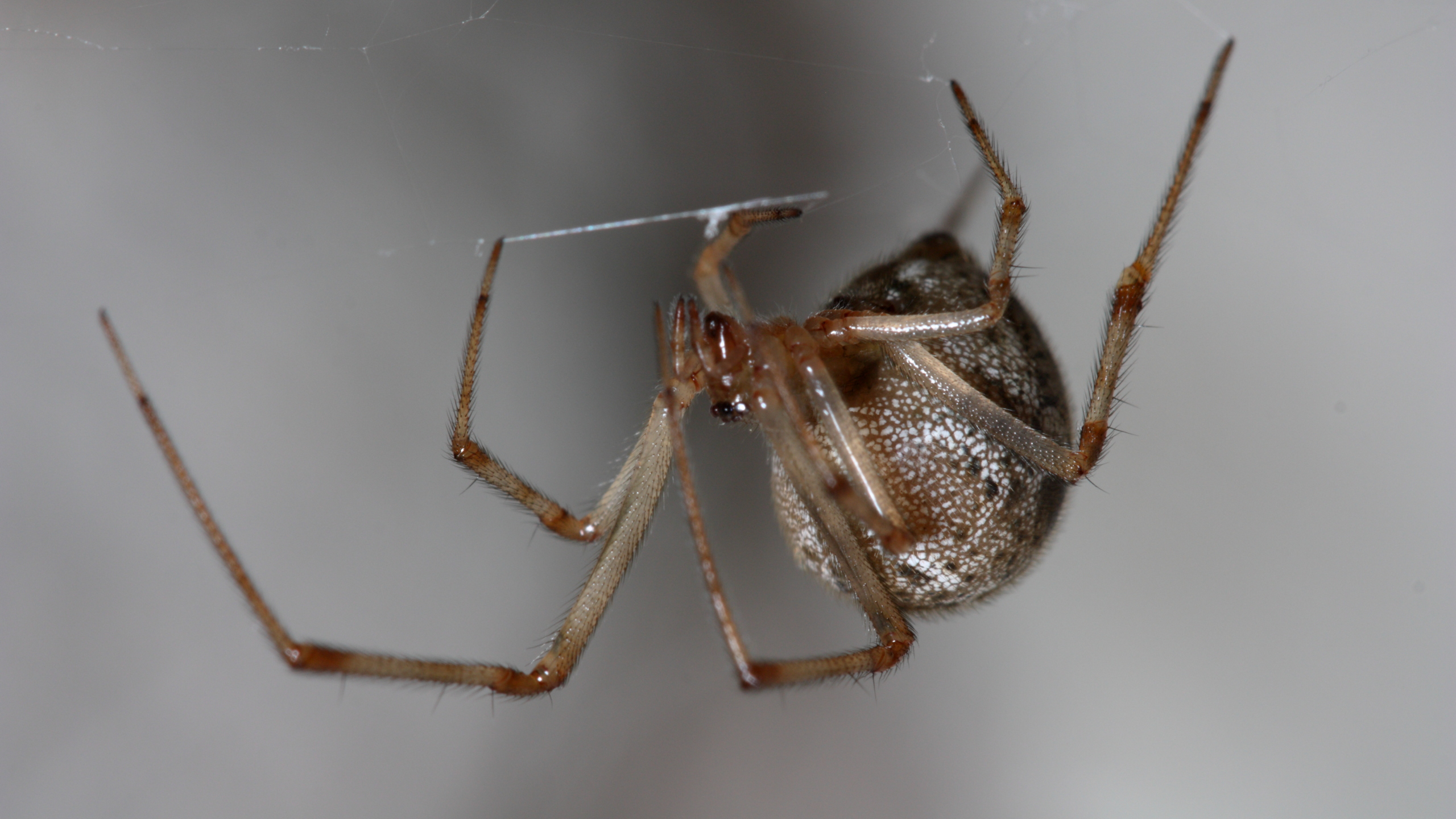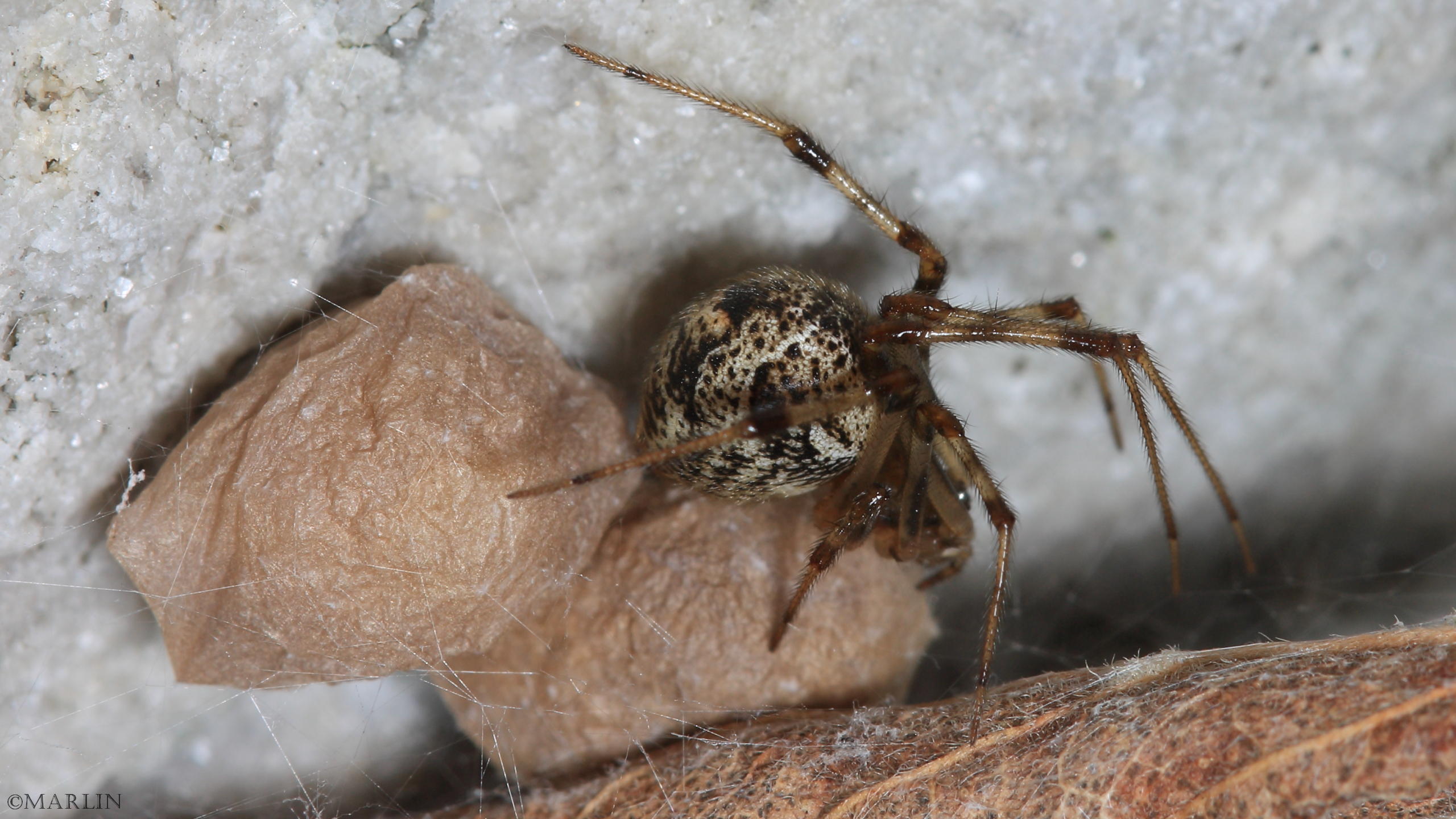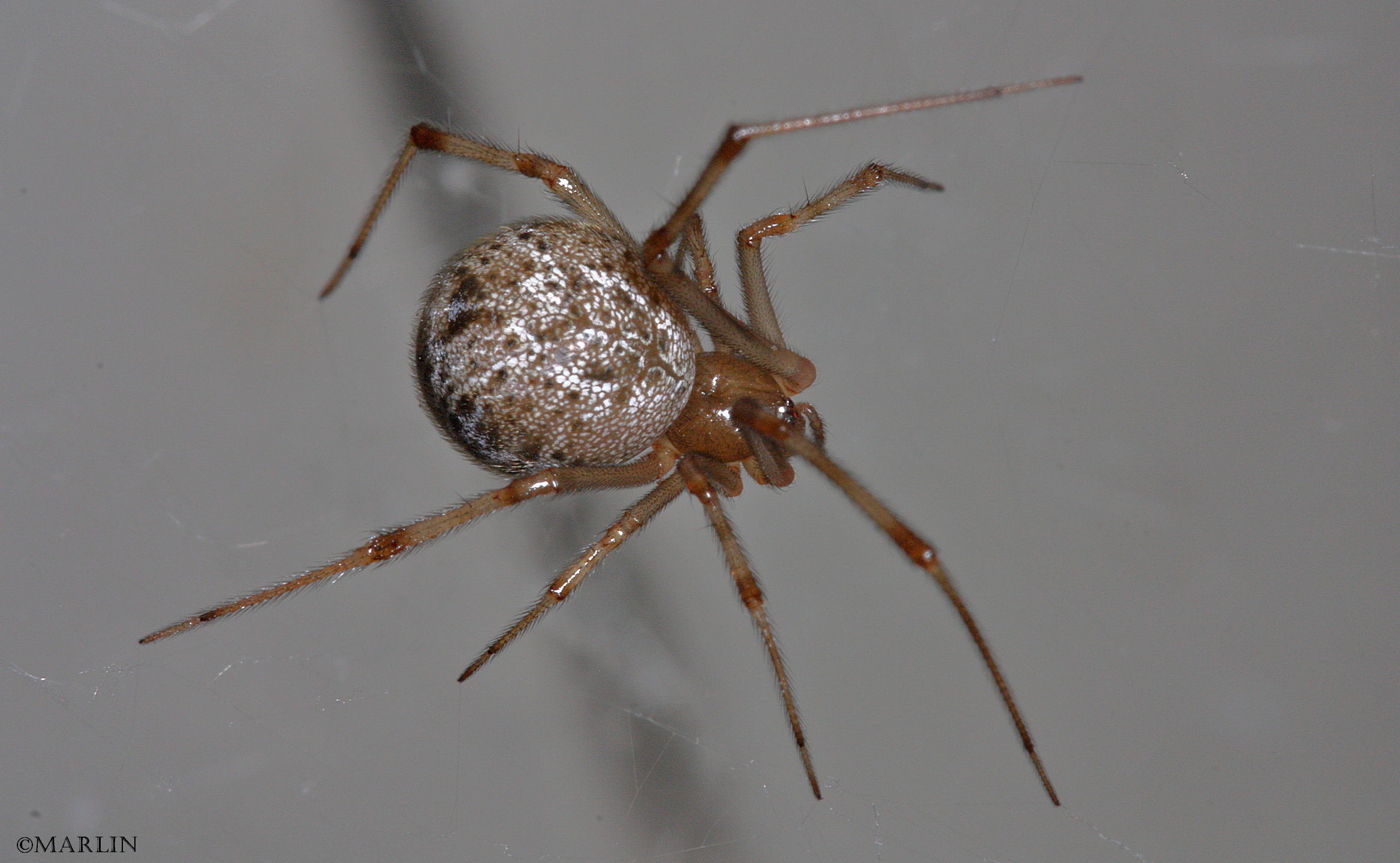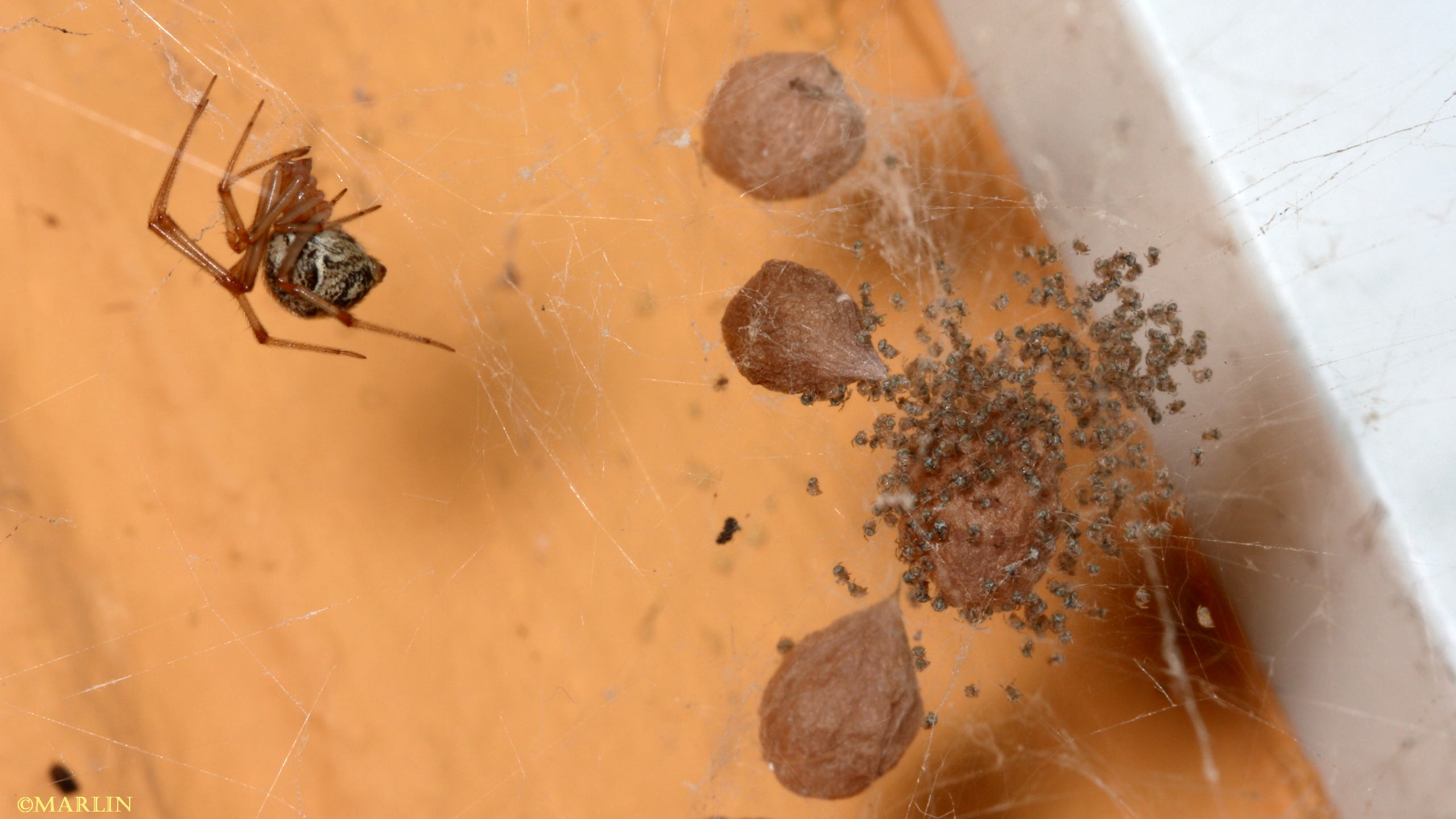House Spider – Parasteatoda tepidariorum
Cobweb spiders’ webs appear messy and disorganized, unlike the organized, circular webs made by orb-weavers and many other web building spiders. In addition, cobweb spiders often have abdomens that are comparatively larger and more spherical than orb-weavers. Cobweb spiders have 8 eyes and 8 legs, 2 body parts, and fang-like mouthparts called chelicerae.
Cobweb spiders undergo simple metamorphosis: young cobweb spiders hatch from eggs and look like tiny adults. They shed their cuticle as they grow. Most cobweb spiders live for less than 1 year. At the end of the summer, female cobweb spiders produce a large amount of eggs that they wrap in an egg case made of silk.
Cobweb spiders are common in North America, and can be found almost anywhere that they can find weeds, fences, trees, walls, or other upright structures. Cobweb spiders are predators, and they will eat almost anything that is small enough to get trapped in their webs.
Like many web-building spiders, cobweb spiders tend to have poor vision – they don’t need to see very well because they can “feel” prey when it gets caught in their webs. Most cobweb spiders are considered beneficial to humans. They eat flies, mosquitoes, and other creatures. However, The black widow spider is a cobweb spider, and its bite can be dangerous.
This could give some people nightmares. All those tiny baby spiders! Sleep well, my friends.
Reference: Bugguide.net More, House Spider – Parasteatoda tepidariorum
Spiders Main | Spiders Index | Orb Weavers | Jumping Spiders | Nursery Web




